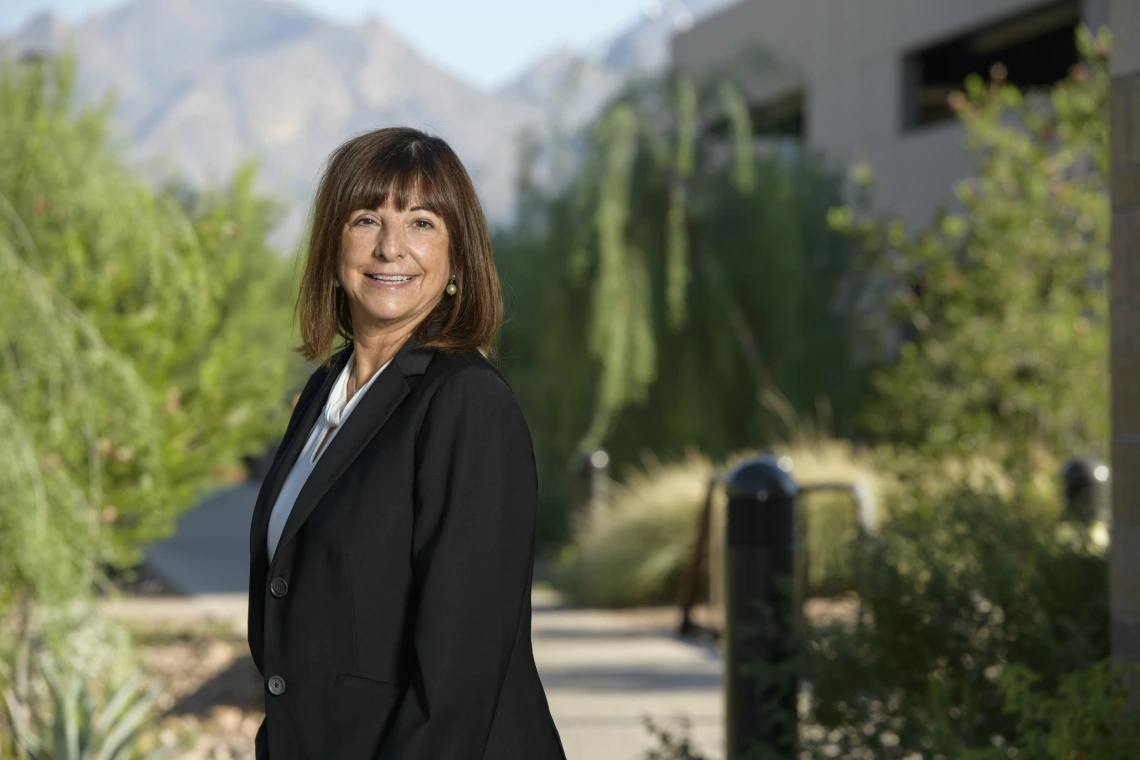Dr. Cynthia Thomson Named Interim Associate Director for Population Science
Dr. Thomson, who is co-leader of the UArizona Cancer Center Cancer Prevention and Control Program, will help align research efforts to better address the cancer health needs of Arizona’s diverse populations.

TUCSON, Ariz. – Highly-regarded for its track record in cancer prevention and control research, the University of Arizona Cancer Center is taking new bold steps to better align its research efforts with the needs of the diverse populations the center serves throughout the state.
One significant step is the appointment of Cynthia A. Thomson, PhD, to the role of interim associate director for population science. Dr. Thomson is co-leader of the UArizona Cancer Center’s renowned Cancer Prevention and Control Program and leads multidisciplinary research with a focus on lifestyle behavior (diet, physical activity and tobacco), and cancer prevention and survivorship.
“Our cancer center is legendary in the field of cancer prevention research, and Dr. Thomson is perfectly suited for this essential leadership position,” said Joann Sweasy, PhD, the Nancy C. and Craig M. Berge Endowed Chair and UArizona Cancer Center director. “She will help us make informed decisions at the senior level of the cancer center so that we are able to design research that will have the strongest impact on the people and communities we serve in Arizona.”
In the new role, Dr. Thomson will work closely with the Community Outreach and Engagement (COE) team, led by Jennifer Hatcher, PhD, associate director, to gain understanding of the cancer needs that are experienced by populations within the center’s catchment area. This service area primarily falls within Arizona’s four border counties (Cochise, Pima, Santa Cruz and Yuma), plus Pinal county, while also having a broader reach throughout the state.
To ensure that research is centric to people in these communities, Dr. Thomson and Dr. Hatcher are developing a comprehensive population health assessment. The assessment will collect a range of information from individual and the communities in which they live, work, and play to identify specific cancer burdens, health disparities, access to cancer care issues and any barriers to cancer treatment.
“The needs of the community should drive the science,” Dr. Thomson said. “The science can then inform back into the community. It’s a very important integrative process that brings everything together to have an even greater impact on the health and well-being of Arizonans.”
Information gathered from the communities is what drives the Cancer Center’s decision-making and planning for future translational research. This information gathered will be shared with clinicians and scientists alike so that high-impact science is designed and conducted in a collaborative “bench-to-bedside to community” approach.
“We want to purposefully develop and deliver on research and programming that will directly enhance the well-being of people living in our catchment area,” Dr. Thomson said. “The first step in this on-going process will be to learn about how Arizonans perceive and are affected by cancer, what their needs are in this area. The second part is to make sure our science is addressing those specific needs.”
Cancer affects various populations in different and often unequal ways. Known as disparities, this can include how certain races or ethnicities may be at greater risk for particular cancers. It may also include environmental factors that increase cancer risk to people living or working in a certain area. It can also include geographic barriers, such as those living in rural areas not having close access to care, and financial barriers for those who cannot afford care.
“Our population science program and COE are committed to understanding and addressing the disparities we know are apparent in our communities,” Dr. Thomson said. “My role is to assure that we have the right people, communities and cancer center scientists at the table to advance these issues forward.”



